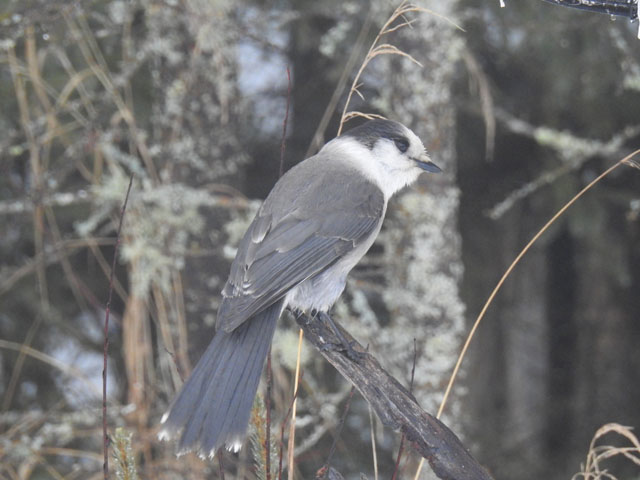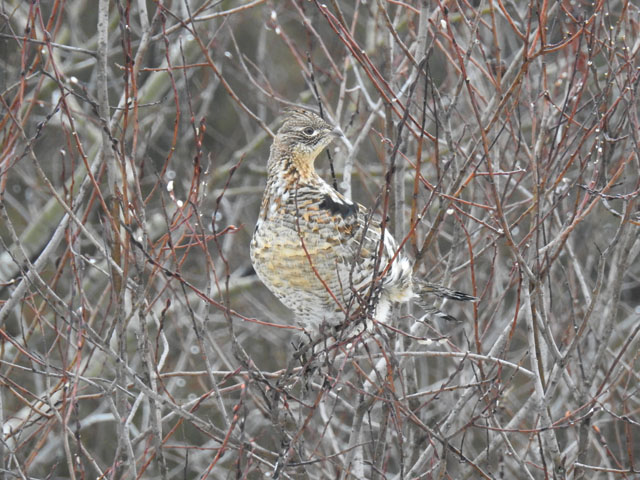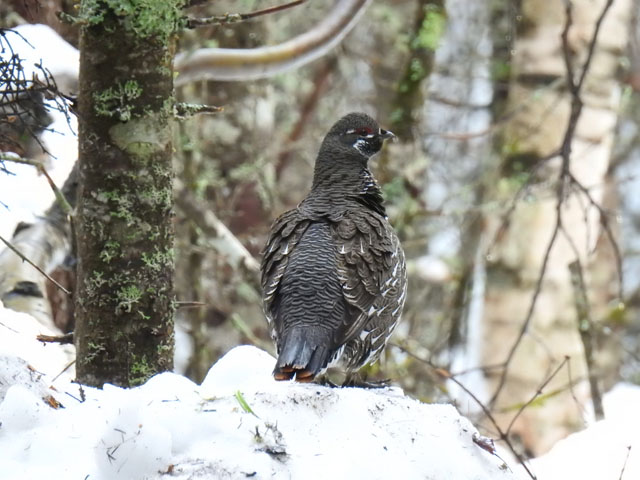From the Field
March 1:
Fabrice Schmitt and Steve Howell from their ongoing cruise, Valparaiso to Buenos Aires
The primary focus of this trip is, of course, the true seabirds, and our first day out from Valparaiso produced great looks at Stejneger’s Petrel (here), along with Juan Fernandez and De Filippi’s Petrels, plus a surprise Cook’s Petrel.
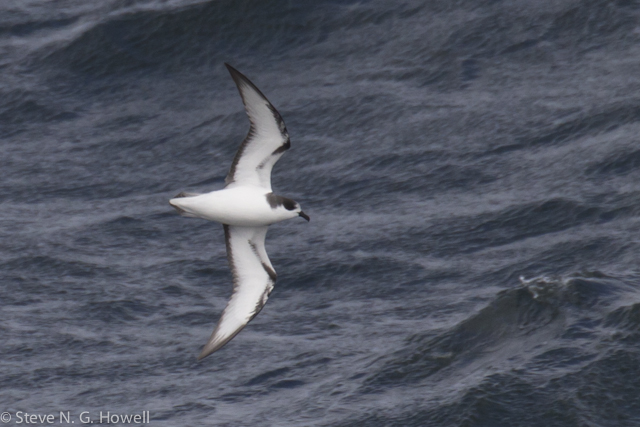
Even more surprising that day were White-faced Storm-Petrel (here) and White-bellied Storm-Petrel, both somewhat south of their usual (or at least known) ranges.
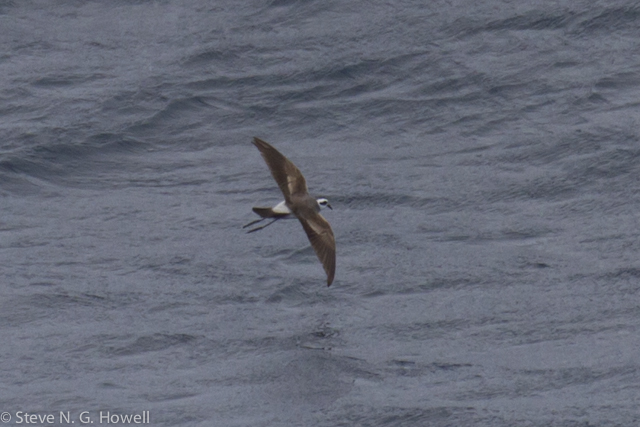
The commonest albatross, which we’ve seen every day at sea, is the beautiful Black-browed, here an immature (top left) and an adult.
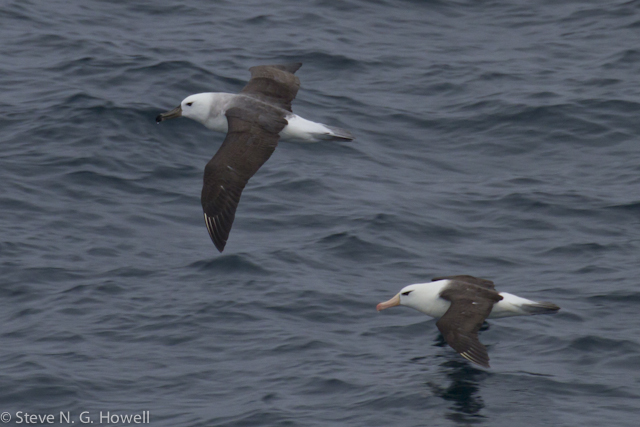
We’ve also seen good numbers of the ‘great albatrosses,’ such as this Southern Royal...
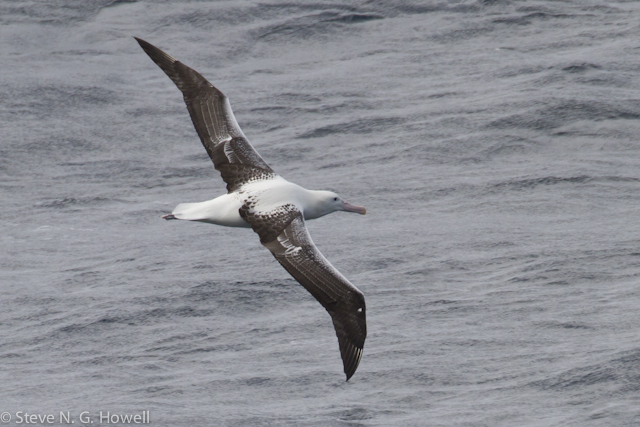
And this confiding Snowy Wandering Albatross.
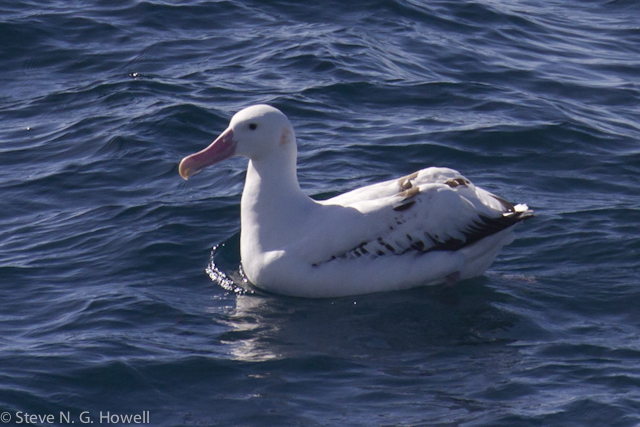
One afternoon we saw numbers of the recently described and enigmatic Pincoya Storm-Petrel
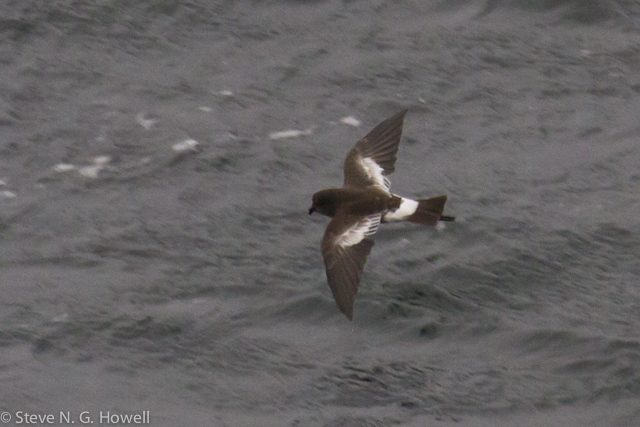
Stops on shore have produced birds ranging from rheas to tapaculos, plus the subject of our attention here in Patagonia...
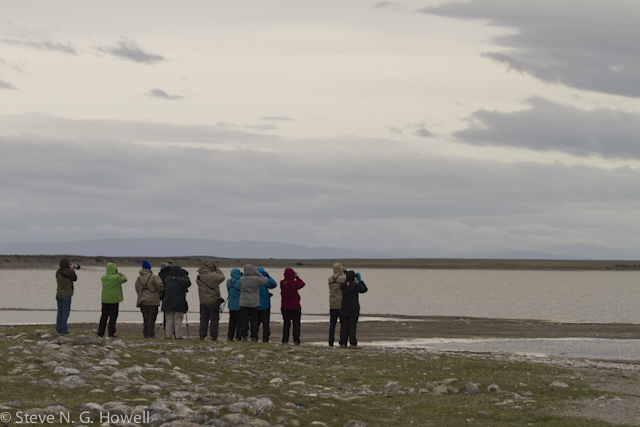
...this adult and spangle-backed juvenile Magellanic Plover, along with an Austral Negrito (a tiny terrestrial tyrant-flycatcher).
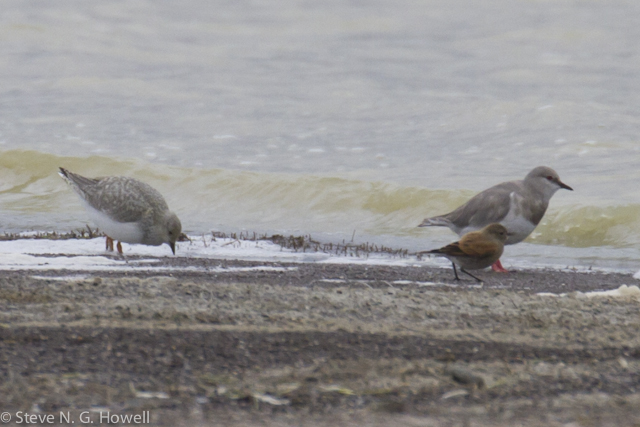
In Tierra del Fuego we enjoyed a sunny picnic lunch overlooking the Beagle Channel...
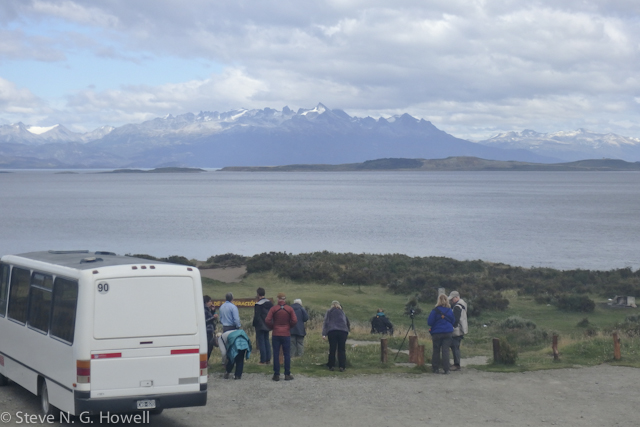
Followed by walk-away views of the stunning Magellanic Woodpecker, here a male.
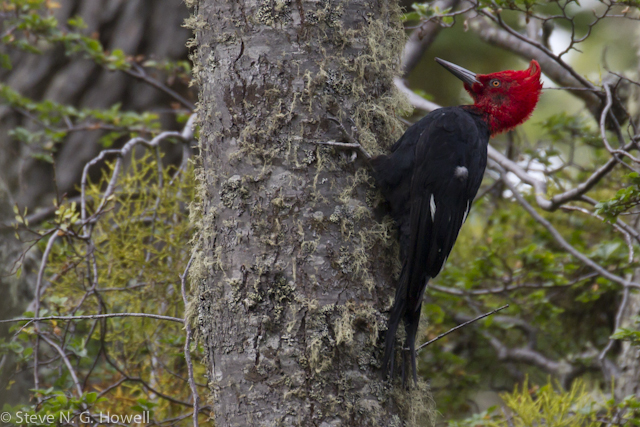
Viewing conditions have been generally excellent (from a stable and comfortable cruise ship!), with the worst weather being as we rounded Cape Horn Island, where of course we saw the famous albatross monument. And now into the Atlantic...
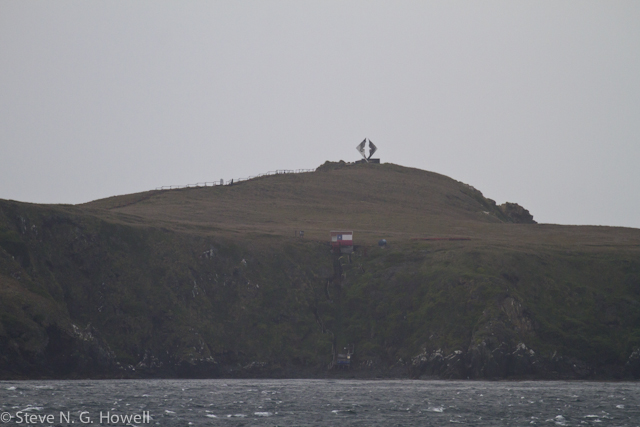
February 25:
Jake Mohlmann on his and Evan Obercian's just-completed tour, Texas: The Rio Grande Valley
We just wrapped up an exciting week in south Texas encountering 196 species of birds while covering over 1,147 miles of pavement, dirt, rivers, lakes, and border wall. At the east end of the lower valley, South Padre Island sits as a barrier between the ocean and mainland. Whimbrels, Marbled Godwits, Long-billed Curlews, and Willets all foraged while Reddish Egrets, Little Blue and Tricolored Herons all stood in wait.
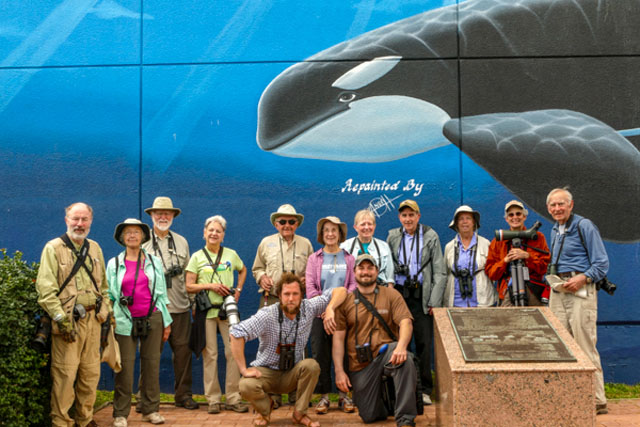
Our group excited to see what South Padre Island has in store.
Further up valley several famous birding destinations were explored including Santa Ana and Laguna Atascosa National Wildlife Refuges, and both Estero Llano Grande and Bentsen State Parks. Here we were met by a bevy of Lower Rio Grande specialties including raucous Plain Chachalacas, vibrant Green Jays, and hooting White-tipped Doves. At Estero we managed to eventually find a very rare and exciting bird when we received word it was being seen at the moment we arrived. A male Rose-throated Becard flew in above our heads and sallied for insects as we stood in awe watching this vagrant in the morning mist. While leaving this park one day a keen-eyed observer spotted a Green Kingfisher sitting above its swampy domain staring intently for unsuspecting fish. This was one of three species of kingfisher seen well this week.
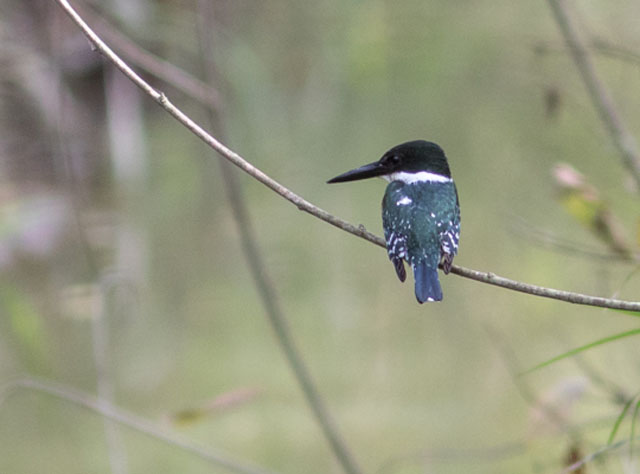
A Green Kingfisher sits silently over a forested stream.
The western edge of the valley turns into the eastern edge of the Chihuahuan Desert with species reminiscent of areas further afield like intricately patterned Cactus Wrens, active Black-tailed Gnatcatchers, and speedy Greater Roadrunners. Standing on the banks of the mighty Rio Bravo here is always exciting. A seemingly endless supply of birds fly up and down the river including some early Red-billed Pigeons seen two days. Osprey, Gray Hawk, and Zone-tailed Hawks all flew by overhead and smaller denizens like miniscule White-collared Seedeater, bold Verdins, and tail-bobbing Black Phoebes worked the edges. A certain feeder setup here won for best of the trip as we watched several Altamira Orioles sharing their space with at least 3 Audubon’s Orioles, all coming in to orange slices.
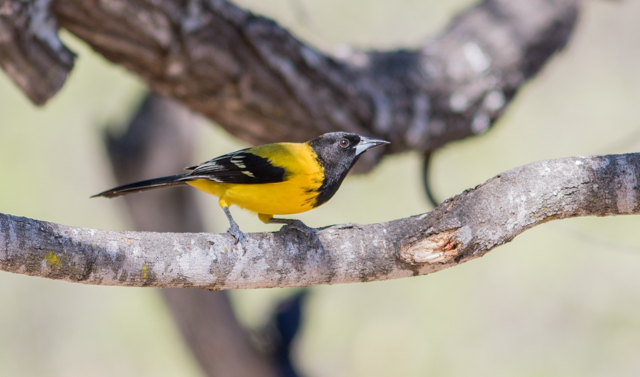
Audubon’s Orioles were seen extremely well.
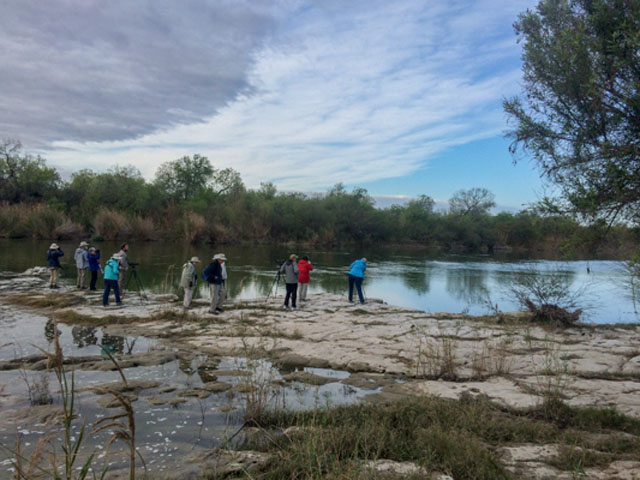
Standing in the Rio Grande on rocks is a great way to see raptors.
Our extension to Corpus Christi was a huge success. Our boat trip through Aransas National Wildlife Refuge produced at least 14 endangered Whooping Cranes, some extremely close. These colossal predators spend the winter here devouring as many blue crabs as they can before heading to the far north to breed.
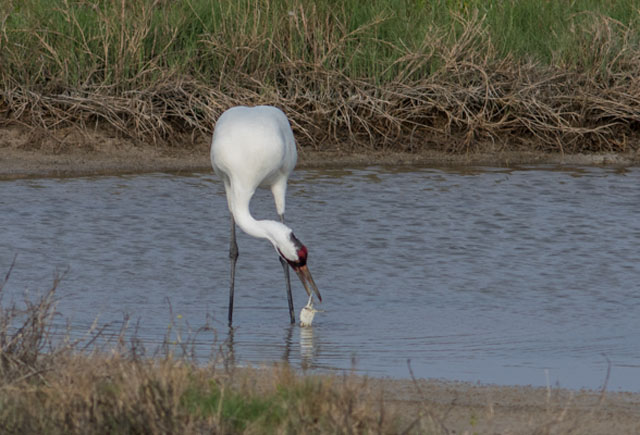
A Blue Crab hangs on for dear life as a Whooping Crane meets its match.
Nearby a rare-for-Texas Broad-billed Hummingbird was a complete surprise as we watched it coming repeatedly to a stake-out feeder. This immature male was stunningly beautiful and voted best bird for some of the participants. A bit further inland the group had the good fortune of coming across our fourth owl species of the trip when a Barred Owl was spotted in a huge oak tree. Much to our surprise there were 2 of these hooting wonders and we got to experience them duet in the last rays of sunshine for the day. What a trip!
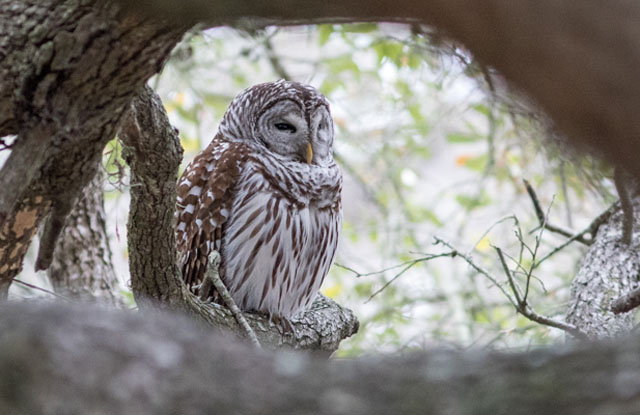
A Barred Owl sits motionless awaiting nightfall.
February 25:
Jon Feenstra on his just-completed tour, Ecuador: The East Slope of the Andes
We just got back from the Amazon slope of the Andes in northern Ecuador east of Quito. This was a pretty short tour, five nights and six days, but we covered nearly 10,000 feet of elevation change between the high paramo above the town of Papallacta all the way down to the foothill rainforest on the south slope of the Sumaco volcano.

On one rainy day at Wildsumaco lodge we spent much of the day watching hummingbirds from the back porch. We ended up with 22 species of hummer that day including this flashy Gould’s Jewelfront.

This atlas moth outside of Cabanas San Isidro was one of the non-bird highlights of the trip. It was also a highlight for a Green Jay that found it shortly after sunrise.

While watching a raging mountain stream from a suspension bridge, a male Torrent Duck navigated the frothy waters right below us.

It took us two tries to find Rufous-bellied Seedsnipe in the high paramo (above 14000 feet el. Finally after an hour of hiking around our driver found it right by the parking lot where we started!

February 16:
Frank Nicoletti on his recently-completed tour, Minnesota in Winter.
The expansive bog lands, boreal forests, and Lake Superior shorelines of Duluth, MN and environs offer an opportunity to see specialty birds of the northern climes in winter. Rather than undergoing predictable migrations, these northern species are erratic, wandering the expanse of the boreal forest and settling where food is most abundant or, in some years, not moving at all. The cyclical crops of spruce and fir cones and the fluctuating populations of voles, for example, determine to a large extent the numbers or even the presence of winter finches and northern owls.
Even in a year that could be said to be “off” for some of these northern nomads, we nevertheless had memorable encounters with many of the birds that make winter in the north so enticing to birders: Black-backed Woodpecker, Pine and Evening Grosbeaks, Bohemian Waxwing, Great Gray, Snowy and Northern Hawk Owl, and Spruce and Sharp-tailed Grouse, just to name a few.
Our January travels through northeastern Minnesota and Northwestern Wisconsin could only be called balmy with temperatures often in the mid 30’s and once reaching 40 degrees!
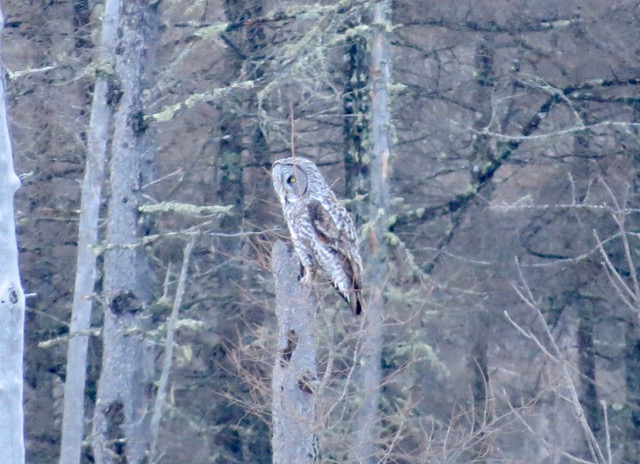
Great Gray Owl - image: Duane Morse
Gray Jay - image: Duane Morse
Ruffed grouse - image: Duane Morse
Spruce Grouse - image: Duane Morse
February 12:
Jon Feenstra on his just- completed tour, Ecuador: Mindo and the Northwest Andes
We just got back into civilization after a week of birding the Mindo area of northwest Ecuador. We sampled a variety of forest habitats from elfin woodland below treeline to lowland rainforest, but mostly stayed within the pleasant, always birdy, and almost uncharacteristically sunny cloud forest. We ended up with 299 total bird species including 37 species of hummingbird.
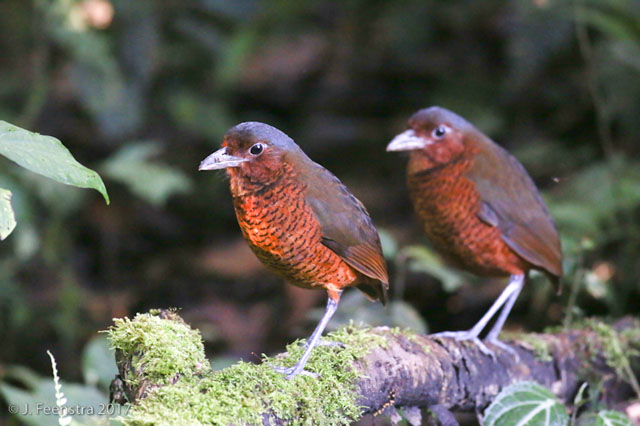
A pair of Giant Antpittas at Reserva Paz de las Aves. The ingenuity and hard work of Angel Paz, the Andean farmer turned antpitta savant, allowed us to see four species of antpitta that day (as well as other shy forest birds like Dark-backed Wood-Qual and Rufous-breasted Antthrush).
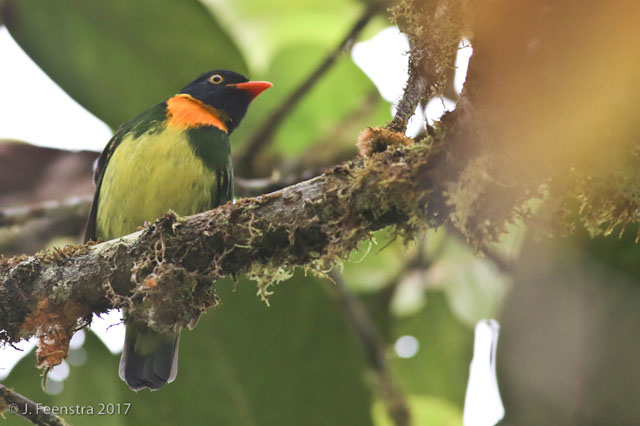
An Orange-breasted Fruiteater eyes us from the canopy. This scarce and local bird is almost common at Reserva Amagusa in the super humid, moss-caked cloud forest near the town of La Delicia.
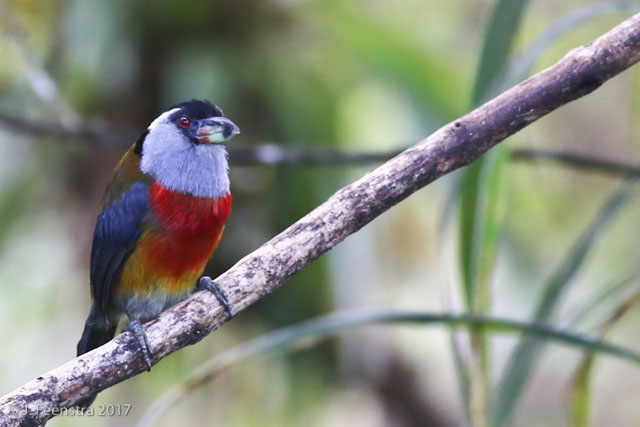
Toucan Barbet, one of the local specialties of the Choco cloud forest. We had decent looks at this bizarre thing on four separate days of the tour. Always a crowd-pleaser.
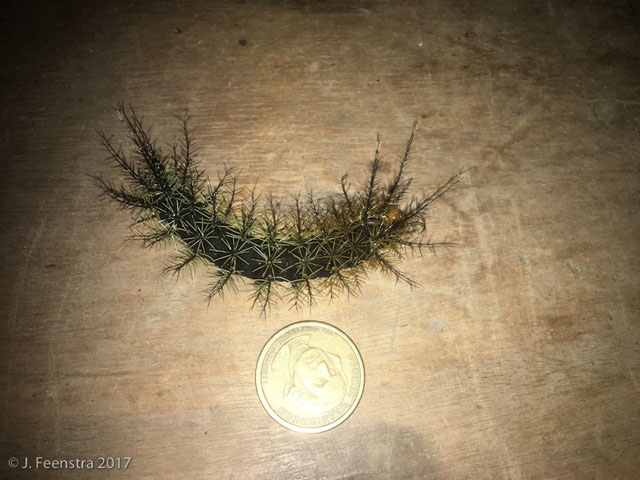
A big spiky caterpillar that is much bigger than George Washington’s head. Maybe it was some kind of lost sea-creature, but we carefully moved this thing off the floor and back into the forest.
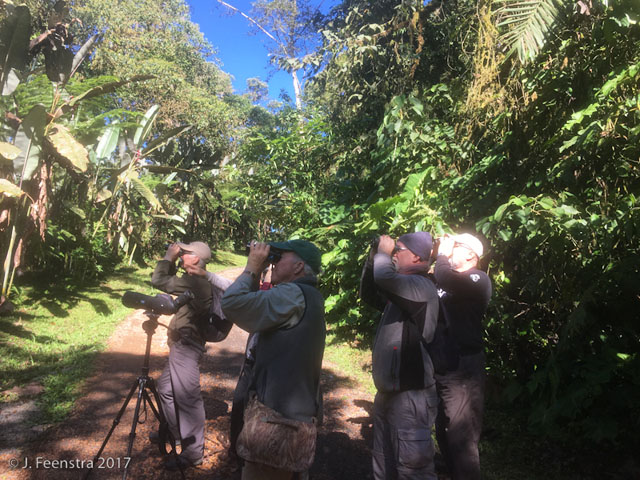
The group watches some tanagers in the driveway of our lodge. We had more than 80 bird species our first morning just around our lodge outside of Mindo.
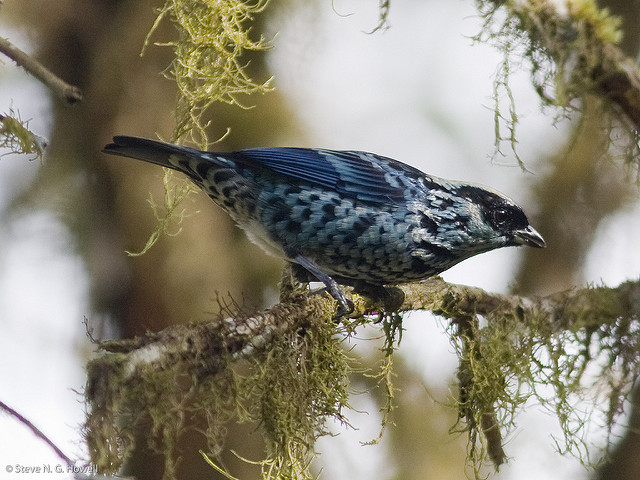
Beryl-spangled Tanager was probably the most common bird that morning.
February 9:
Jake Mohlmann on his just-completed tour, Arizona: A Winter Week in the Southeast
Another wonderful week in the desert southwest as our Winter Week tour comes to a close. Just over 1,000 miles of wonderful scenery were traversed and just under 140 species of birds were seen. Our home base at Casa de San Pedro provided an extremely comfortable spot for us to return to daily, and look forward even more to the divine breakfasts awaiting us in the mornings.
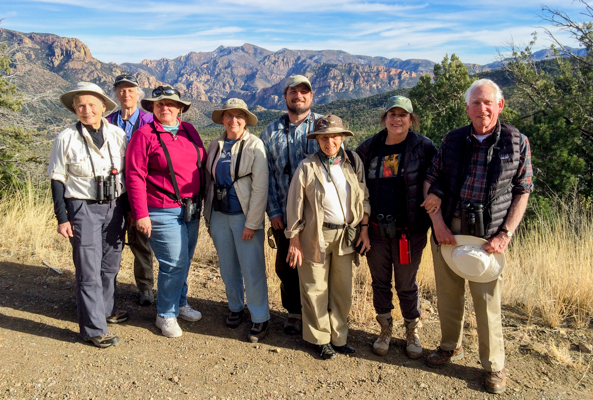
Our group high above Cave Creek Canyon.
The Patagonia Lake area was hopping with birdlife and we were met by Swamp and Lincoln’s Sparrows, Bewick’s and rare Winter Wrens, and empidonax flycatchers such as Hammond’s and Gray Flycatchers. Our patience was awarded when we all watched a Virginia Rail creep out from the brush along the lakeshore and award us with amazing views of this normally shy denizen.
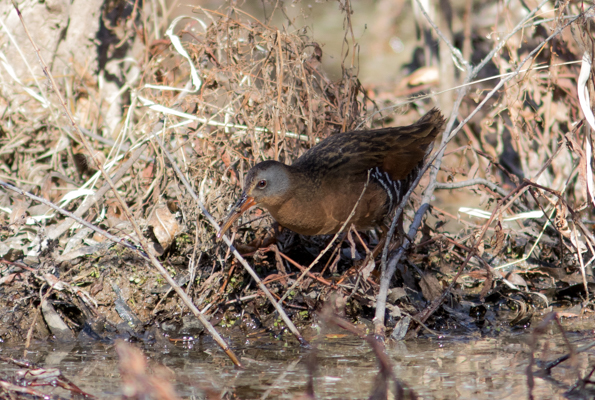
A normally shy Virginia Rail out and about.
The Huachuca Mountains provided a perfect backdrop for daily sunsets and the canyons here produced two avian highlights of the tour. On a short walk up Hunter Canyon my owl imitations invoked a spontaneous response from the bird itself when a “Mountain” Pygmy Owl was eventually tracked down. In a large oak tree this tiny bird hunter broadcasted its presence to us for at least 15 minutes as we watched, and took pictures, through the scope. In the nearby Carr Canyon we were about to come around a bend when a male Montezuma Quail was spotted sitting right in the middle of the road. Our group watched as at least 4 vehicles nearly hit this stunning bird but eventually it worked its way off the road. We cautiously went over to get a closer look, were stumped not to see it anywhere, and were shocked when at least 7 of these burst right out of the grass at our feet nearly giving us all heart attacks.
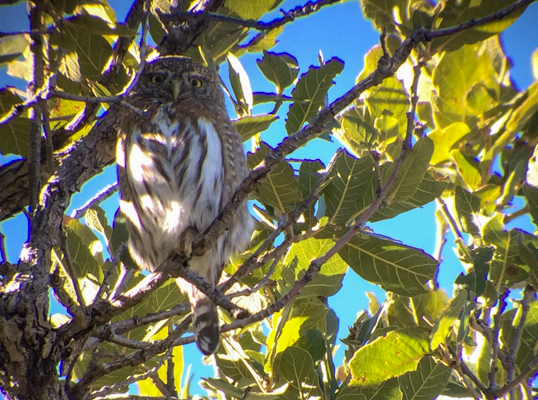
Monotonous tooting alerted us to this tiny Northern Pygmy Owl.
The Sulphur Springs Valley was ripe with avian highlights including residents like Bendire’s Thrasher perched next to the van and wintering rarities like Eurasian Wigeon in Willcox. A stately Ferruginous Hawk vied for our attention as we enjoyed one of several Greater Roadrunners seen on the tour. The showstopper in this area continues to be the Sandhill Crane show however. We stood in awe as wave after wave of these gray monstrosities came pouring into the Whitewater Draw Wildlife Management Area. Seeing a sea of thousands of these birds is something one never forgets.
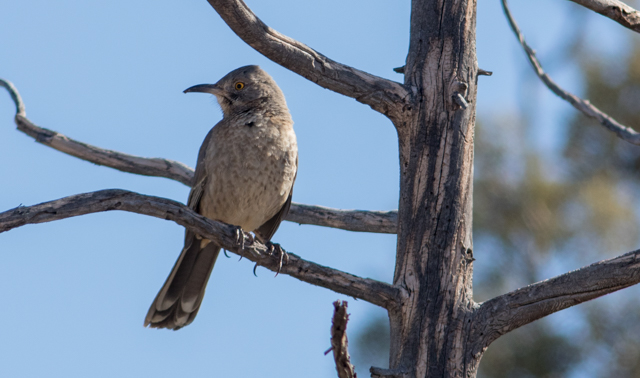
A rare resident Bendire’s Thrasher posing just outside the window.
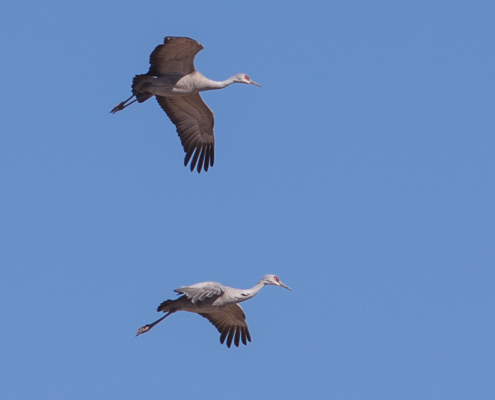
Thousands of Sandhill Cranes poured in as we ate our picnic lunch.
In the famed Chiricahua Mountains we spent a day exploring Cave Creek Canyon with its pockmarked sheer pink walls and abundance of birds. In the flats a Streak-backed Oriole won as rarest bird seen on the trip, and close by a pair of Crissal Thrashers sat up for scope views.
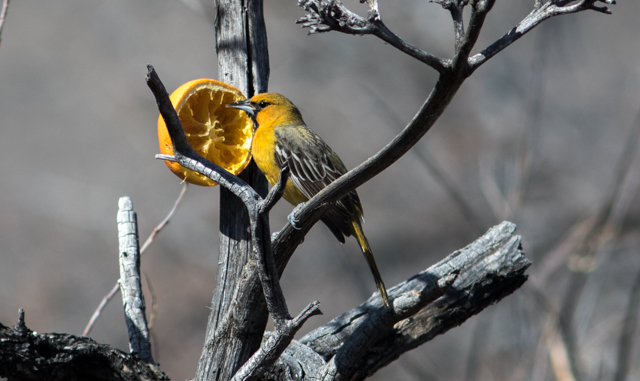
The only known Streak-backed Oriole north of Mexico seen well in Portal.
Our week was filled with perfect weather unabated by any snow or rain. We were overjoyed to soak in the daily sunshine, lots of lifebirds, and endless scenery this tour has to offer. What a week!
February 8:
Rich Hoyer on his just-completed tour, Mexico: Baja Californa's Cape Region
Baja California’s Cape region was incredibly birdy and a delightful place to spend a week in early February this year. We had a blissful time wandering through migrant-filled oases, taking aimless, unhurried walks through fascinating deserts and along remote beaches, and taking a morning boat ride on Magdalena Bay with an unforgettable whale experience as well as countless birds. We also had one amazingly delicious fresh seafood meal after another while enjoying each other’s company in a small group that meshed really well.
We connected with the three currently accepted Baja endemic species even before lunch on our first day, with Belding’s Yellowthroats followed shortly by a Gray Thrasher that sat confidingly only a few yards away.
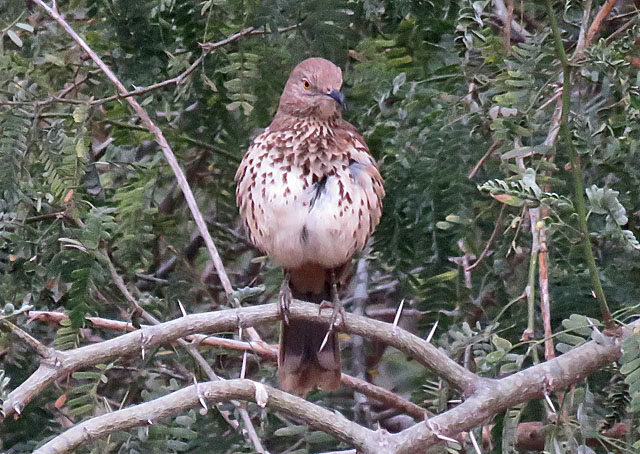
We had several good views of Xantus’s Hummingbird this year, and one particular male that seemed to be feeding on some sort of exudate from palm flowers often perched just a few feet away.
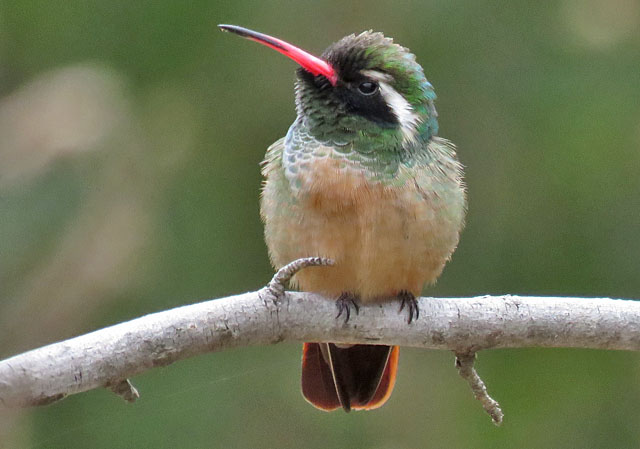
Orange-crowned Warblers were unusually abundant this year, pishing up in the dozens and dozens; on just one that perched for some time below eye level we could see the rarely glimpsed namesake.
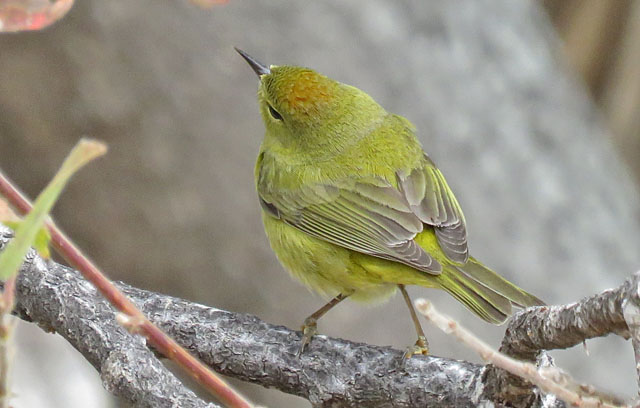
An endemic subspecies and a possible split is the Northern (or “Cape”) Pygmy-Owl, of which we saw two on our trip into the Sierra Laguna foothills.
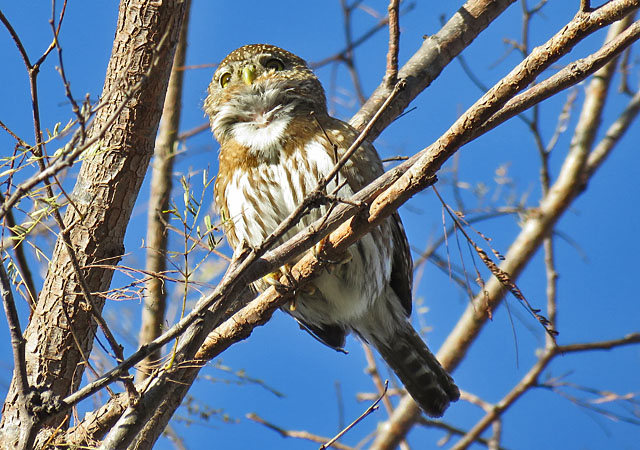
The birding near La Paz was fantastic. Here we had our best views of the Gulf of California endemic Yellow-footed Gull.
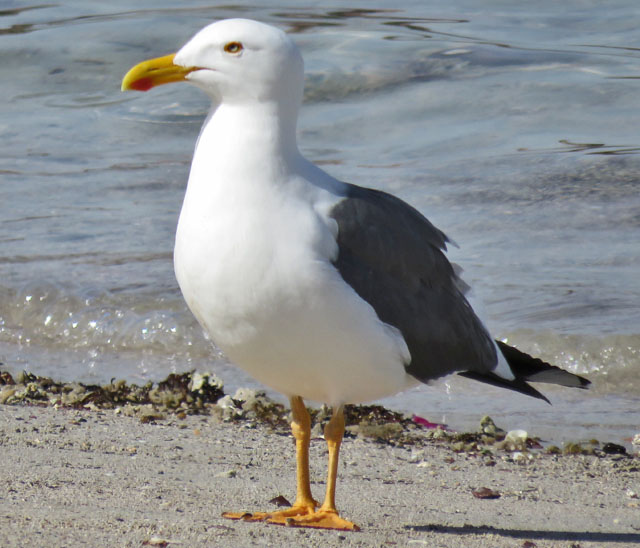
The Centenario mudflats were teeming with thousands of shorebirds, mostly Western Sandpipers, but also many Wilson’s Plover, Western Willets, and many others.
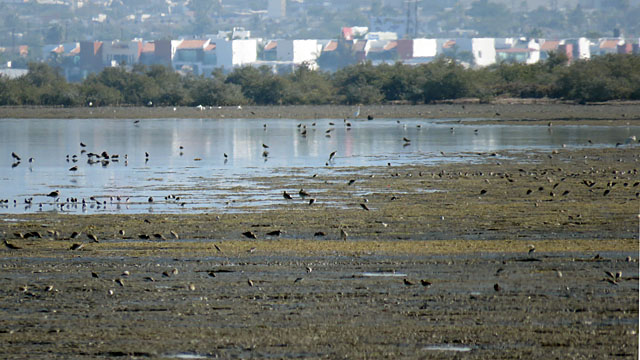
The Long-billed Curlews at La Paz as well as several at Magdalena Bay were among the tour favorites.
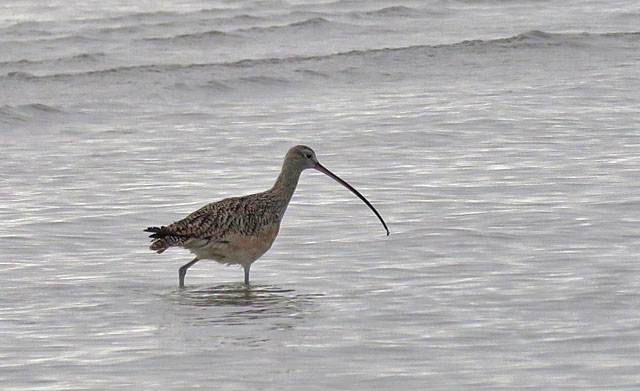
On our whale watching trip we chanced into a feeding frenzy of plunge-diving Brown Pelicans, which upon closer inspection also hosted a small group of Black-vented Shearwaters and a school of hunting Long-beaked Common Dolphins.
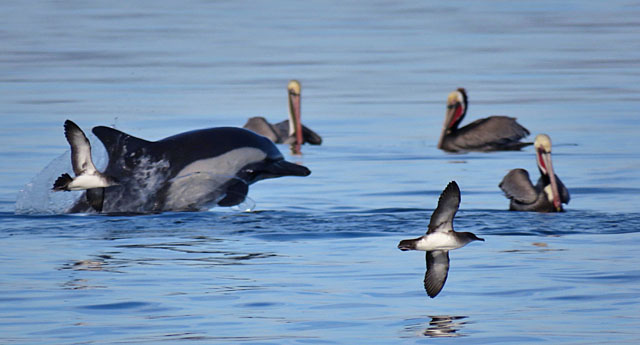
Gray Whales were very active in courting and mating at the mouth of the bay, some so involved in their actions they paid no attention to our presence.
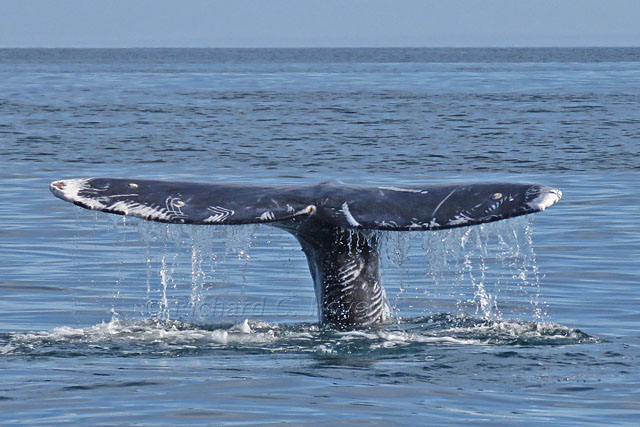
February 7:
Steve Howell on his just-complete, volcano-adjusted, tour, Mexico: Colima and Jalisco
Adjusted? Well, a very active volcano blowing lava rocks and giant ash clouds (some a few miles high!) into the air has that effect. Fortunately, the bird-rich San Blas area isn’t too far away and we combined Colima and San Blas very successfully, finding over 250 species in a week full of sun, good food, friendly people, and great birding.
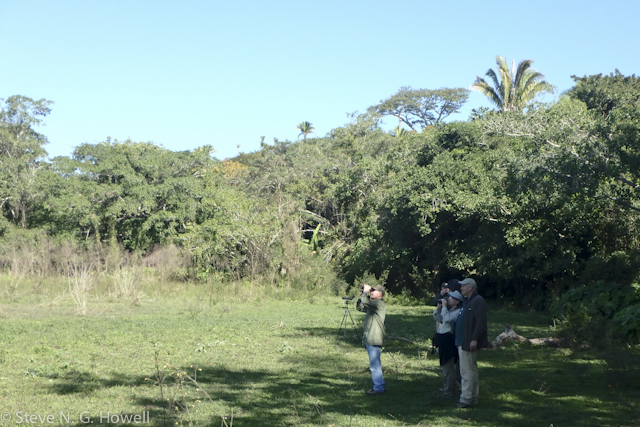
Our group enjoying the sun—from the shade!
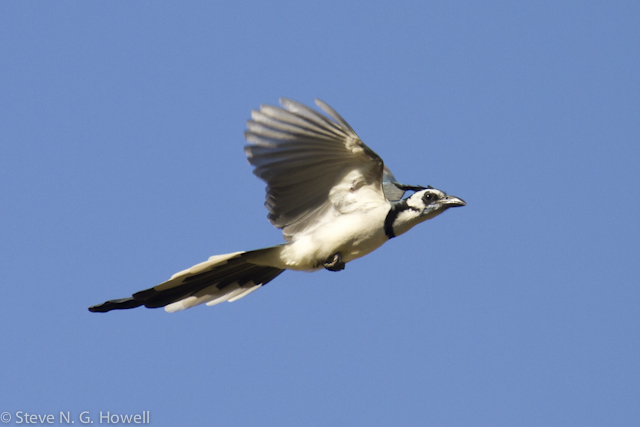
We started with White-throated Magpie-Jays in Colima...
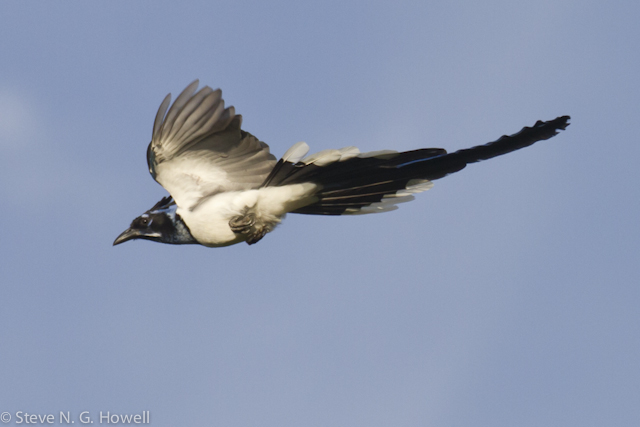
...and moved on to Black-throated Magpie-Jays in San Blas.
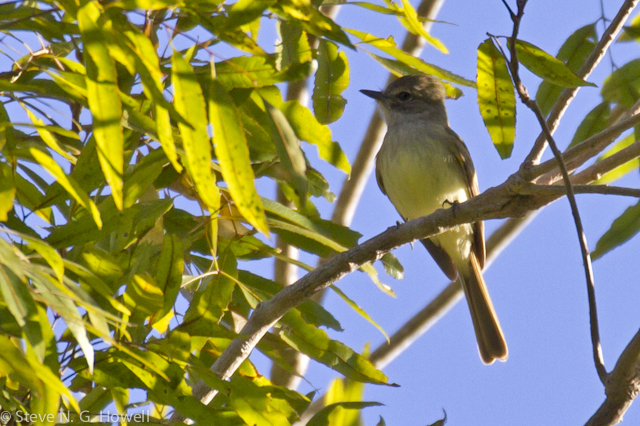
Birds ranged from this understated Flammulated Flycatcher in the shade...
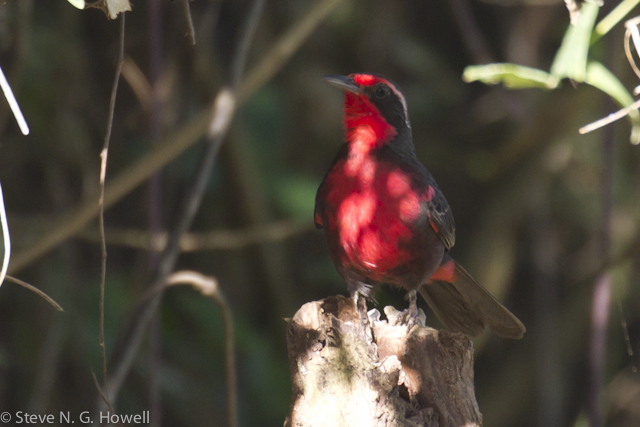
To an overstated, sun-dappled Rosy Thrush-Tanager
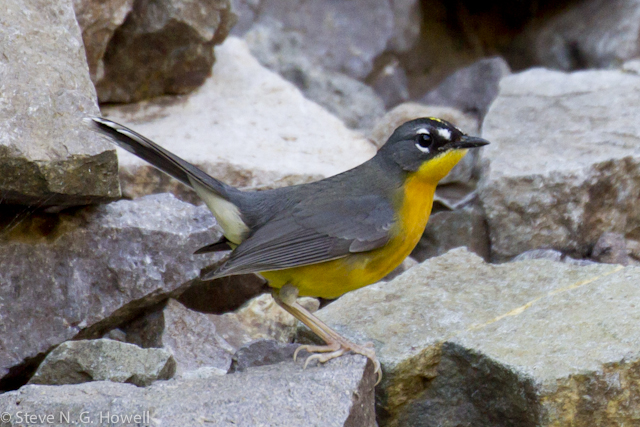
Confiding Fan-tailed Warblers fed at ant swarm one morning
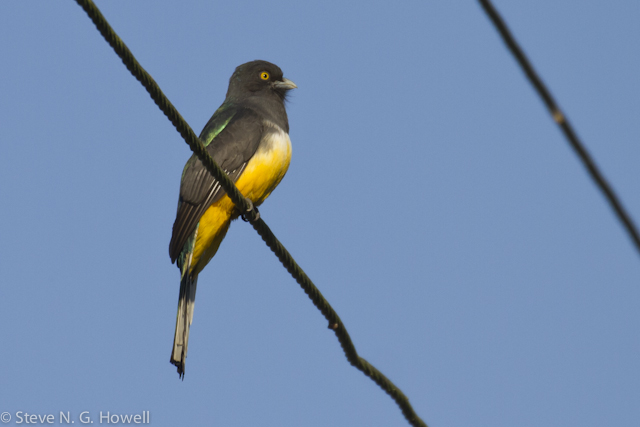
Another morning this unconcerned Citreoline Trogon posed in the sun.
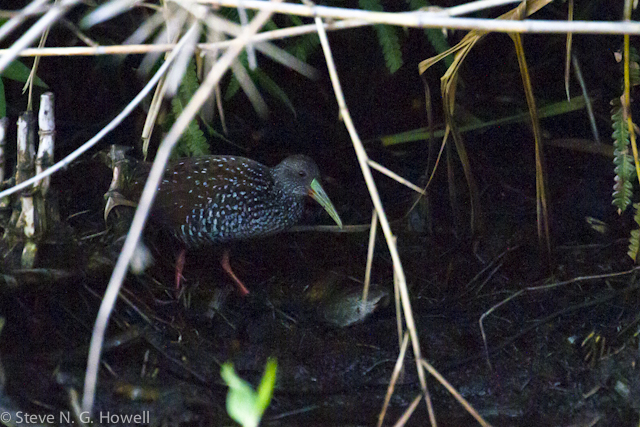
We watched this Spotted Rail at length as it hammered a small fish to death!
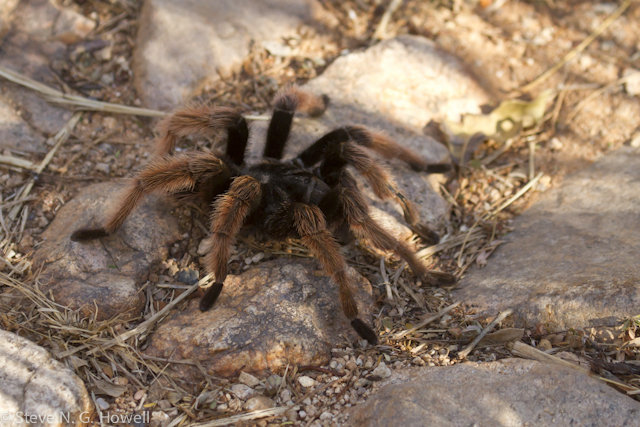
Non-avian highlights included a stunning tarantula.
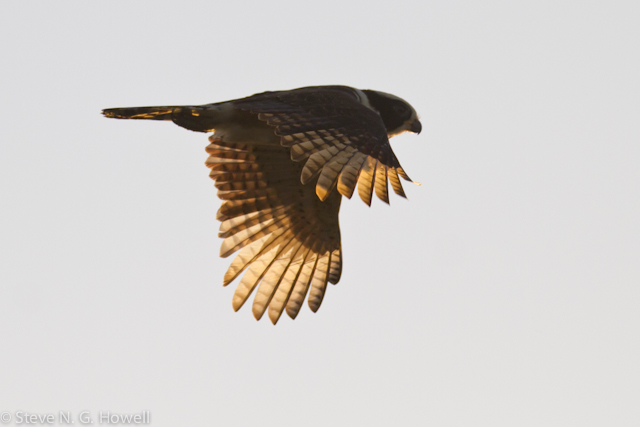
This Laughing Falcon flew across the sunset on our last day and closed out a wonderful week of bird-filled travel
February 3:
Evan Obercian on his just-completed winter tour of Southeastern Arizona
Our winter week in Southeast Arizona saw days of crisp, chilly desert air, gently-warming sun, spectacular and varied scenery, and nearly 140 species of birds. From our exceptionally comfortable home-base on the San Pedro River riparian corridor in Hereford, we ventured afield to explore the oak forests beneath the towering painted rock domes of the majestic Chiricahua Mountains; bird-rich areas within the Sulphur Springs Valley; canyons in the Huachucas and the Santa Ritas; the Saguaro-clad rockscapes of the Sonoran desert near Tucson; the enormous, oceanic expanse of grasslands in the San Rafael Valley, where silence reigns; and many habitats in between. The birding was excellent, punctuated by a spectacle of Sandhill Cranes at Whitewater Draw, a rare Streak-backed Oriole near the bird-famous town of Portal, and just an awesome plethora of wintering sparrows and other birds, scattering along fences and in brushy areas throughout.

The Chiricahua Mountains were crowned with new snow

Ferruginous Hawks were again in the Sulphur Springs Valley
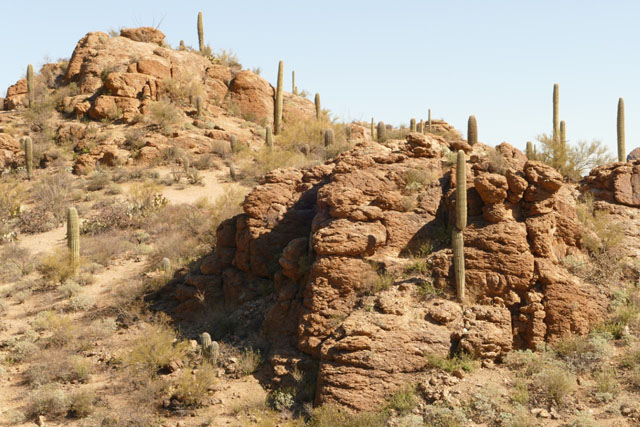
Great Saguaro Cacti graced the hillsides not far from Tucson

In many places, "spish" and you were surrounded by sparrows; here three White-crowns and a Brewers.
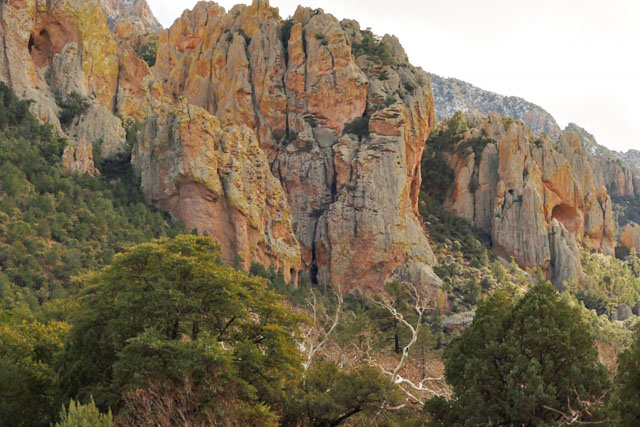
Fabulous rock formations grace the entrance to the Chiricahua"s Cave Creek Canyon
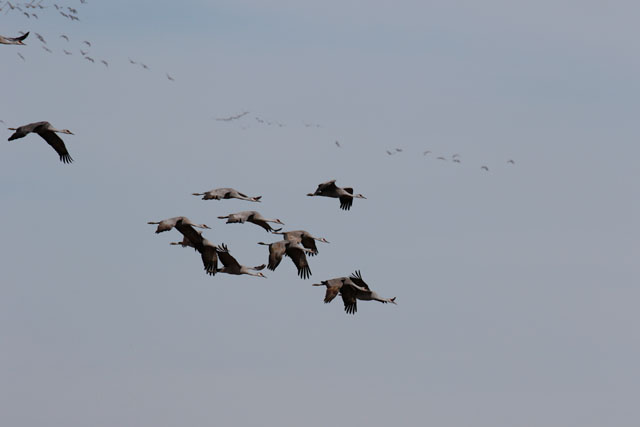
At Whitewater Draw in the Sulphur Springs Valley we may have seen 15,000 Sandhill Cranes
January 31:
Jake Mohlmann on his just-completed tour to Southern Argentina
We had an exciting journey through southern Argentina, seeing 244 species of birds and 16 mammal species, all the while being treated to nearly perfect weather, excellent lodging, and wonderful regional cuisine.
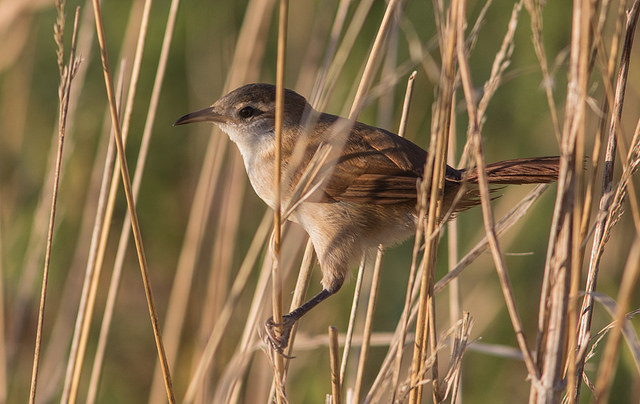
A secretive Curve-billed Reedhaunter found us intriguing.
Our route out to San Clemente through the Pampas was dominated by vast grasslands peppered with extensive marshes filled with thousands of ducks, shorebirds, and terns. Greater Rheas stood tall along the roadsides and White-rumped and Buff-breasted Sandpipers relaxed, their long journey north still several months away.

A fine male Brazilian Teal floats by, just one of the 16 duck species seen.
The wind-swept shrubby steppe and endless dry desert of the Patagonia region is home to a few endemic birds and we succeeded in finding three of them. At Punta Tombo a family of White-headed Steamer Ducks swam in an out of the throngs of Magellanic Penguins returning to feed their squawking young. In the creosote flats near the coast Carbonated Sierra Finches were in full display ascending to the proper height and fluttering back down to their respective perches. We had as well amazing views of a White-throated Cachalote which came in and perched on a debris pile right in front of us.
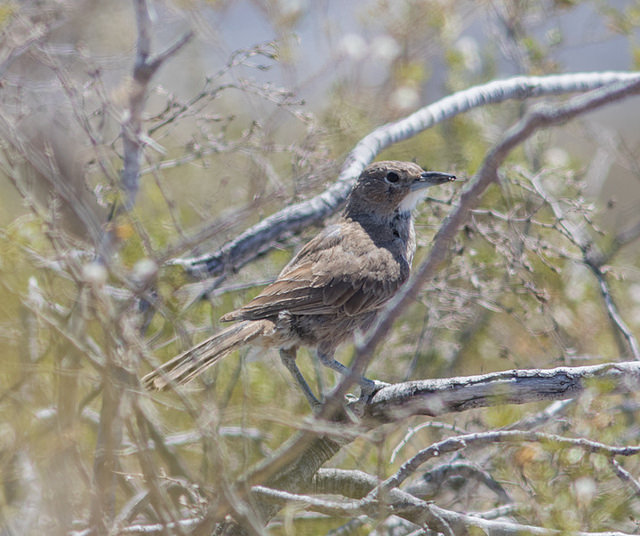
The White-throated Cachalote resides in the bleak Patagonian desert.
In Tierra del Fuego National Park we tried many spots for the majestic Magellanic Woodpecker and after a wonderful hike along an isolated bay we were thrilled to find a family group foraging on the ground mere meters from our cameras.

A majestic male Magellanic Woodpecker searching for grubs...
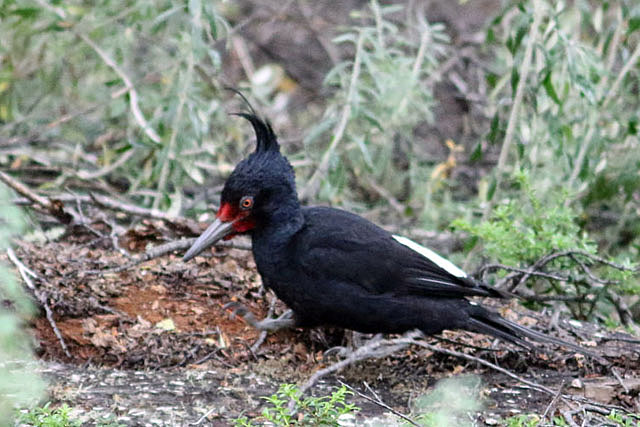
...and here a female.
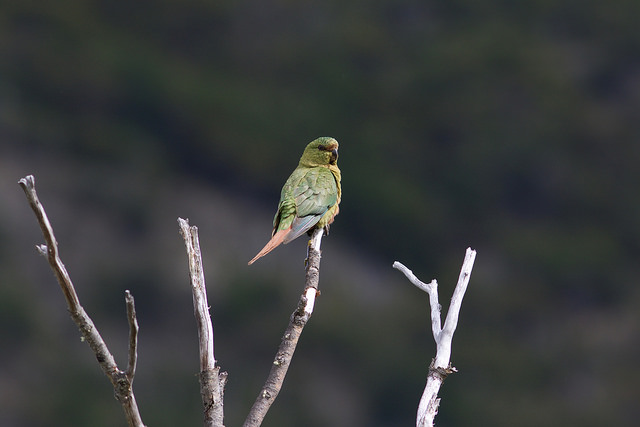
An Austral Parakeet perched in perfect light.
El Calafate sits perfectly in the transition zone between the desert and the rain forests, and harbors one of the most spectacular glaciers on earth. At three miles wide there’s a lot to take in as this massive river of ice stretches for miles towards Chile and the Patagonian ice field. Birding is particularly good in this area and we watched Andean Condors soaring high overhead, Spectacled Ducks defending their tiny breeding ponds, and Thorn-tailed Rayaditos on every (other) tree.
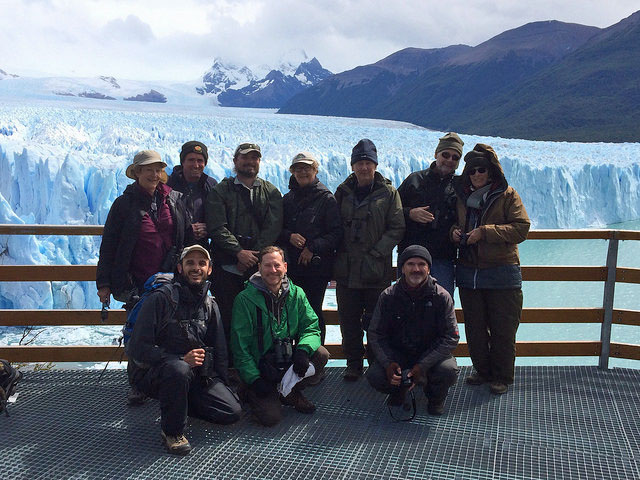
Our happy group at the extraordinary Perito Moreno Glacier.
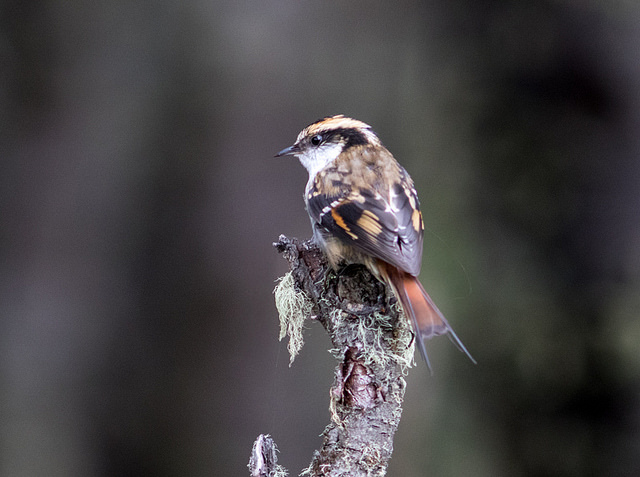
The sprite Thorn-tailed Rayadito adorns trees in the southern Beach forests.
All in all, and from my perspective, this was a lovely tour.

